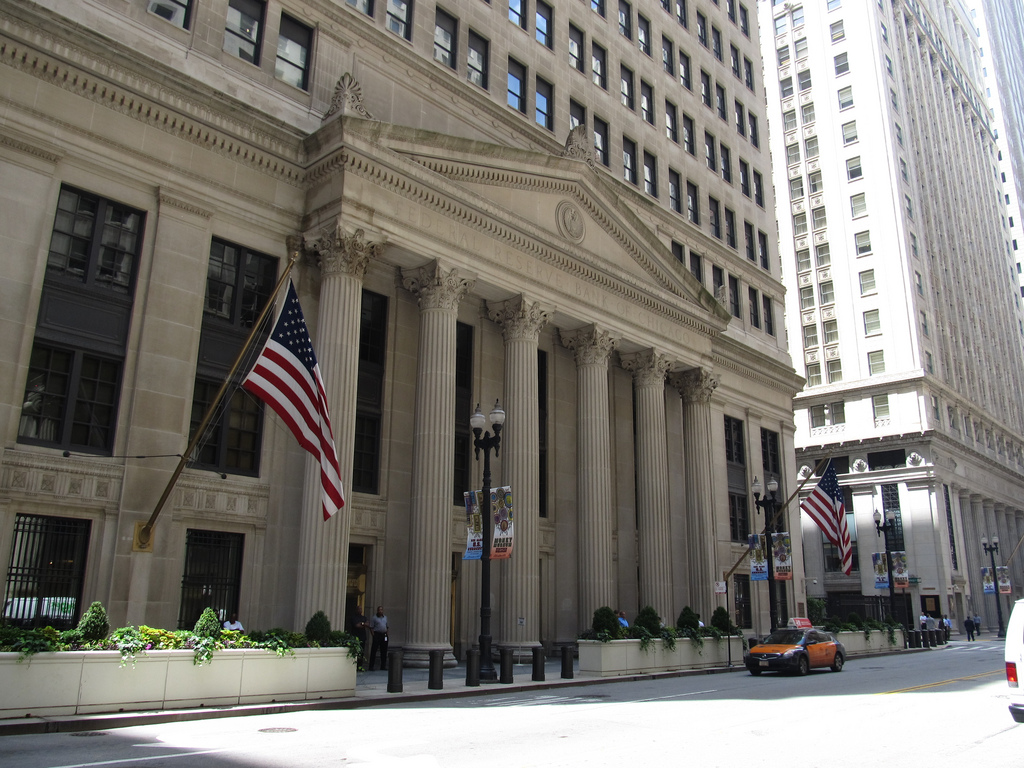The Federal Reserve System (FRS) of the United States, following the May 1-2 meeting, decided to keep the interest rate on federal funds in the range of 1.5-1.75%, as the majority of participants expected. However, the main message to the market was contained in the text of the statement.
The Fed pointed out that inflation in the US in the medium term will rise close to the target level of 2%.
"The information received after the March meeting of the FOMC indicates continuing improvement in the labor market situation and economic activity growth at a moderate pace," the statement said. And although we saw almost the same text at the last meeting, something new was added there.
"The growth in employment was strong on average in recent months, and unemployment remained low," the Fed notes. Here was added clarification "on average".
At the same time, recent data indicate that the growth rate of consumer spending has slowed compared to the strong performance of the fourth quarter, while business investment in fixed assets continued to increase significantly.
"In annual terms, both the general inflation rate and inflation without taking into account food and fuel prices have become closer to 2%," the document says. This paragraph changed in comparison with the March text.
"It is expected that inflation in annual terms will be close to the target FOMC level of 2% in the medium term. The risks for the economic forecast look approximately balanced," the document says. In the March text, the second sentence ended with the phrase "however the FOMC closely monitors inflation rates," which is now missing.
This statement can be considered a key one, since it implies that the Fed will not rush to raise rates.
Whatever it was, the market is still confident that the regulator will raise the rate at the next meeting. Futures estimate this probability in 94%.
Another question is that the Fed may change its policy, many experts believe. The market’s reaction was mixed. First, the dollar began to decline, and stock indices to grow, but after a while everything changed.
At the end of the day, quotations of the euro/dollar pair completed the day near the session's minimums.
It is worth adding that the Fed’s statement is very ambiguous: the acceleration of inflation against the backdrop of slowing the economy. All this cannot please investors, because these are signs of stagflation.
We also note a fairly clear relationship between the Fed's efforts to normalize the balance sheet and increase yields.
It is the US debt market that sets the tone for the moods in all other markets, and if yield growth cannot be stopped, it's probably not worth waiting for anything good.
The next meeting of the committee is scheduled for June 12-13 and will be accompanied by a press conference by Jerome Powell, as well as the publication of updated economic forecasts.
source: bloomberg.com
The Fed pointed out that inflation in the US in the medium term will rise close to the target level of 2%.
"The information received after the March meeting of the FOMC indicates continuing improvement in the labor market situation and economic activity growth at a moderate pace," the statement said. And although we saw almost the same text at the last meeting, something new was added there.
"The growth in employment was strong on average in recent months, and unemployment remained low," the Fed notes. Here was added clarification "on average".
At the same time, recent data indicate that the growth rate of consumer spending has slowed compared to the strong performance of the fourth quarter, while business investment in fixed assets continued to increase significantly.
"In annual terms, both the general inflation rate and inflation without taking into account food and fuel prices have become closer to 2%," the document says. This paragraph changed in comparison with the March text.
"It is expected that inflation in annual terms will be close to the target FOMC level of 2% in the medium term. The risks for the economic forecast look approximately balanced," the document says. In the March text, the second sentence ended with the phrase "however the FOMC closely monitors inflation rates," which is now missing.
This statement can be considered a key one, since it implies that the Fed will not rush to raise rates.
Whatever it was, the market is still confident that the regulator will raise the rate at the next meeting. Futures estimate this probability in 94%.
Another question is that the Fed may change its policy, many experts believe. The market’s reaction was mixed. First, the dollar began to decline, and stock indices to grow, but after a while everything changed.
At the end of the day, quotations of the euro/dollar pair completed the day near the session's minimums.
It is worth adding that the Fed’s statement is very ambiguous: the acceleration of inflation against the backdrop of slowing the economy. All this cannot please investors, because these are signs of stagflation.
We also note a fairly clear relationship between the Fed's efforts to normalize the balance sheet and increase yields.
It is the US debt market that sets the tone for the moods in all other markets, and if yield growth cannot be stopped, it's probably not worth waiting for anything good.
The next meeting of the committee is scheduled for June 12-13 and will be accompanied by a press conference by Jerome Powell, as well as the publication of updated economic forecasts.
source: bloomberg.com





